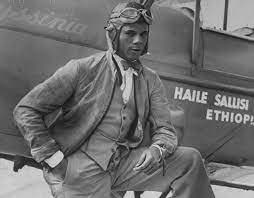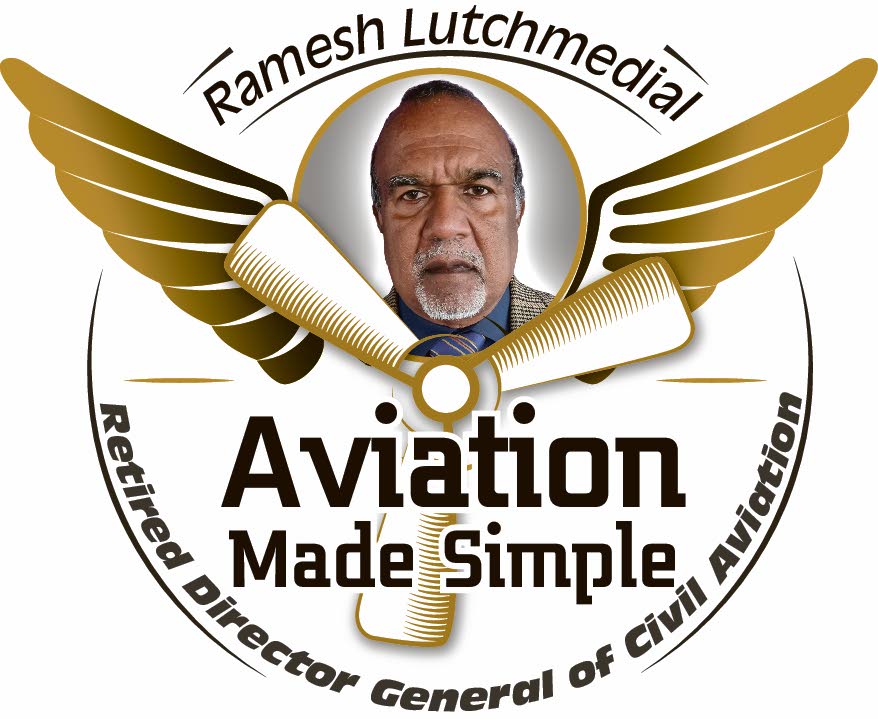Black Eagle flies again: The tale of TT-born aviation pioneer Hubert Julian

Hubert Fauntleroy Julian was a legendary aviation pioneer nicknamed "The Black Eagle," who was born in Port of Spain on September 21, 1897. His father, Henry, was a cocoa plantation manager in Toco.
Julian is reputed to have been the first black person to obtain an American pilot’s licence.
Julian first glimpsed an aeroplane on January 23. 1913, when he went to the Queen's Park Savannah in Port of Spain to witness American aviator Frank Boland do exhibition flights with his tailless aircraft for the governor, Sir George Le Hunte. During Boland’s first flight, while trying to land in the Savannah, he lost control of the plane, crashed into the ground and died instantly. Julian claimed the shock of the crash remained etched in his memory for a long time.
After World War I, Julian left for Canada to study medicine. There, in November 1920, he flew for the first time during a joyride with Canadian flying ace Billy Bishop.
In 1921, Julian left Montreal, moved to Harlem, New York, came under the influence of the charismatic Marcus Garvey and joined the Universal Negro Improvement Association (UNIA).
This new "Garveyite" soon adopted a new persona, rechristening himself "Lieut Hubert Julian" of the Royal Canadian Air Force. Julian had a tailor make him a fake military uniform to push his new narrative.
On September 2, 1922, Julian made his first parachute jump at Curtiss Field on Long Island. He later teamed up with aviator Clarence Chamberlin, who flew him up above Harlem, where the Trinidadian parachuted several times. His most famous jump was when, wearing a crimson jumpsuit, he played Runnin' Wild on a saxophone. This stunt caused Julian to be dubbed "The Black Eagle of Harlem."
In 1924, Julian and Chamberlin, began planning a transatlantic flight from New York City to Liberia, with stops in Florida, Central America, the Caribbean and Brazil. An old seaplane was purchased and refitted for the proposed flight, which Julian called the Ethiopia I.
On July 4, with thousands gathered at the banks of the Harlem River to witness his take off, Julian boarded his plane and soared into the sky.
A few minutes later, one of his plane's pontoons, which had filled with water, threw the aircraft off balance causing it to crash into Flushing Bay. Julian survived.
Julian tried twice to pilot a transatlantic flight before the 1920s came to end. The first of these two attempts ended when some unknown person vandalised his plane’s wings.
In 1929 he successfully made the transatlantic flight, two years after that of Charles Lindbergh. This was commemorated by calypso singer Sam Manning in a song, Lieutenant Julian and is on YouTube at https://youtu.be/RATZ-D2EOtc.
In the first half of the 1930s, Julian made three trips to the Ethiopian Empire. His first visit was at Emperor Haile Selassie’s invitation. In a pre-coronation show, Julian parachuted to the feet of Selassie, who was so enthralled that he bestowed on Julian Ethiopian citizenship, the rank of colonel, and awarded him the Order of Menelik, the empire’s highest honour.

On his second visit, he crashed Haile Selassie's favourite plane, causing the emperor to expel Julian from his kingdom. However, the Black Eagle returned to Ethiopia on the eve of the Second Italo-Ethiopian War, gaining a military commission to help defend the African kingdom.
When Julian learned Adolf Hitler’s close aide Hermann Göring had been demeaning peoples of colour, the Black Eagle issued a challenge to Göring, also a pilot, to duel him in an aerial battle above the English Channel. Goring never responded to the challenge, but Julian gained widespread praise for his bold challenge.
After the US entered World War II, Julian joined the military. He served less than a year, becoming an American citizen in the process, and earning an honourable discharge with the rank of private, first class.
At the end of World War II, Julian became a licensed arms dealer. His first contract was with the Arbenz government of Guatemala. He defied the FBI when, after being asked to cease his dealings, he continued selling.
His second contract was with the Batista government of Cuba as it tried and ultimately failed, to combat Fidel Castro's revolutionaries.
His third, and final, contract was with Moise Tshombe, leader of Katanga during the Congo Secession Crisis in the 1960s. Julian was detained by UN forces for questioning and was jailed for four months before being released. He retired on his return to the US.
Julian spent his retirement meeting the likes of Muhammad Ali and appearing on the Merv Griffin Show and the Tonight Show. He died in 1983 and was buried at Calverton National Cemetery in Suffolk County, New York.


Comments
"Black Eagle flies again: The tale of TT-born aviation pioneer Hubert Julian"